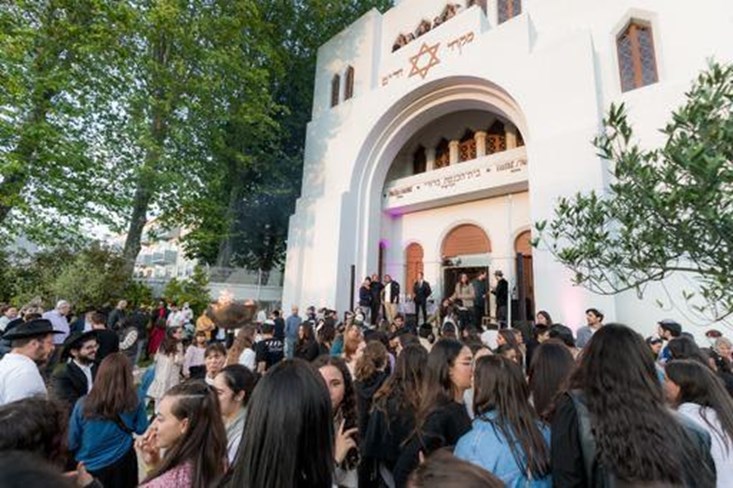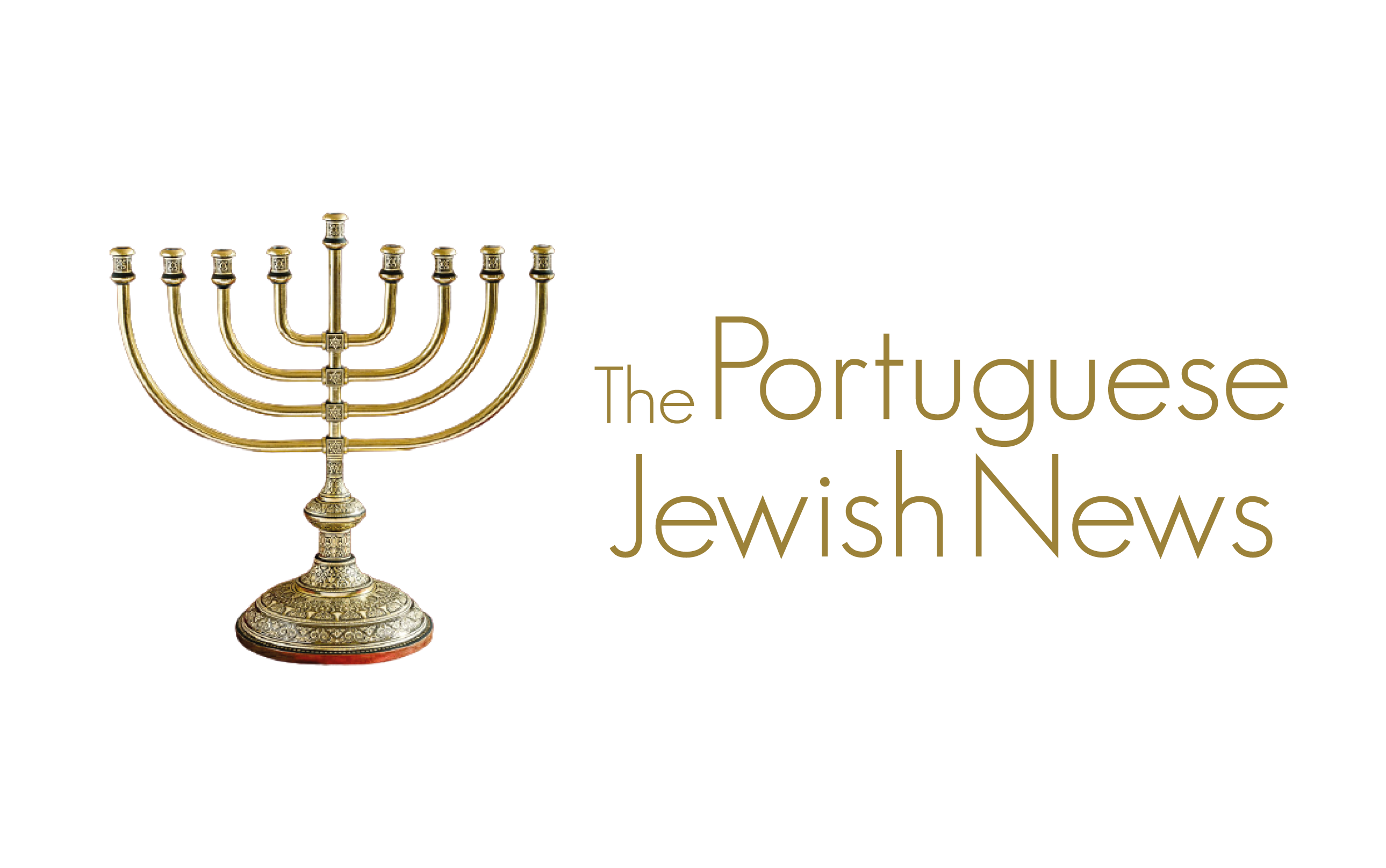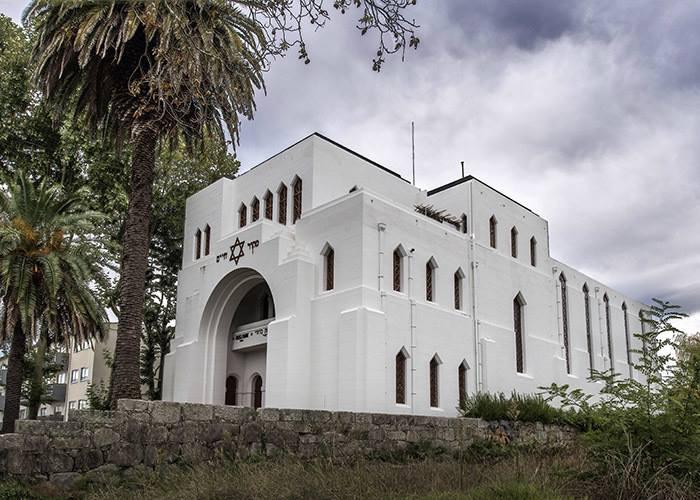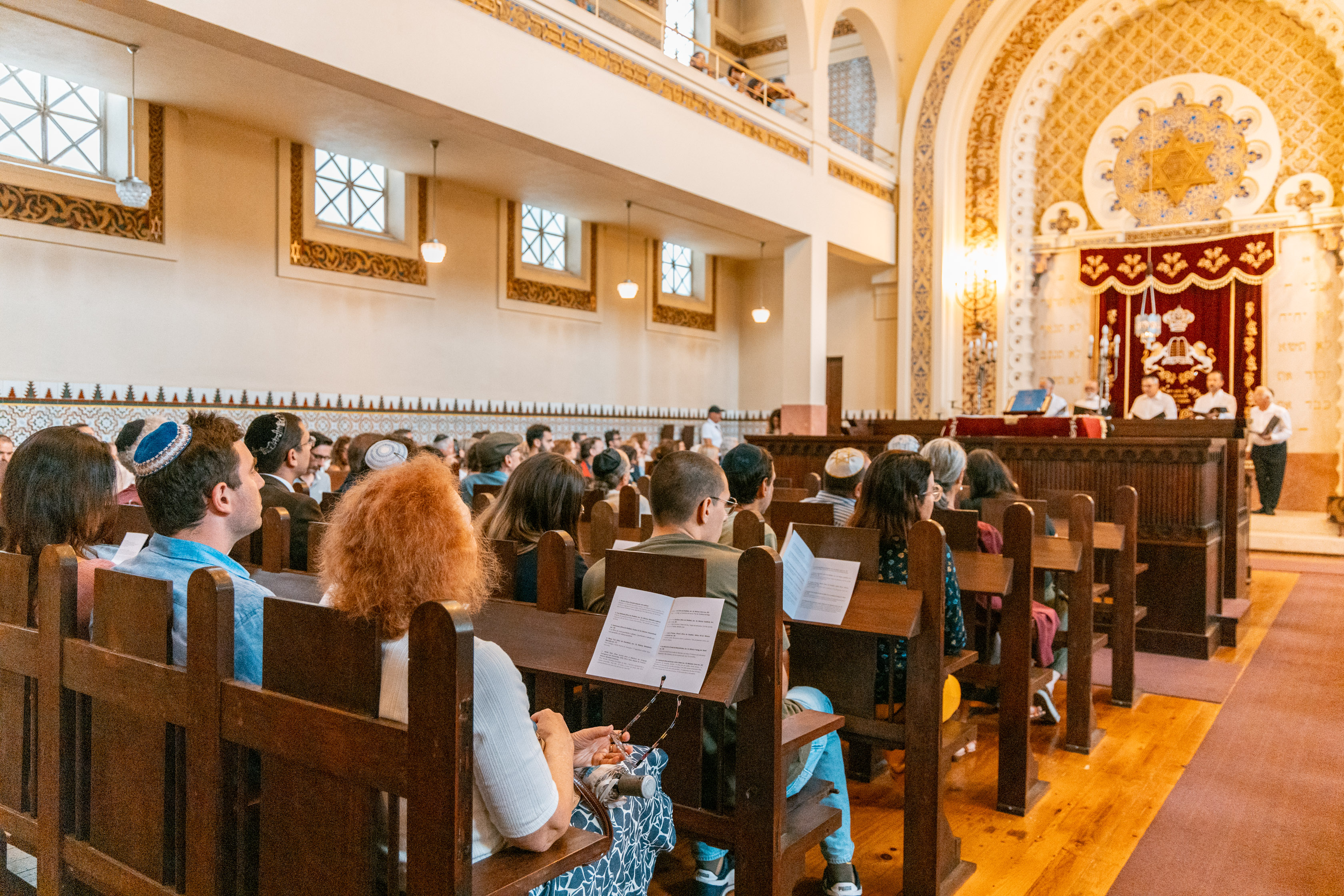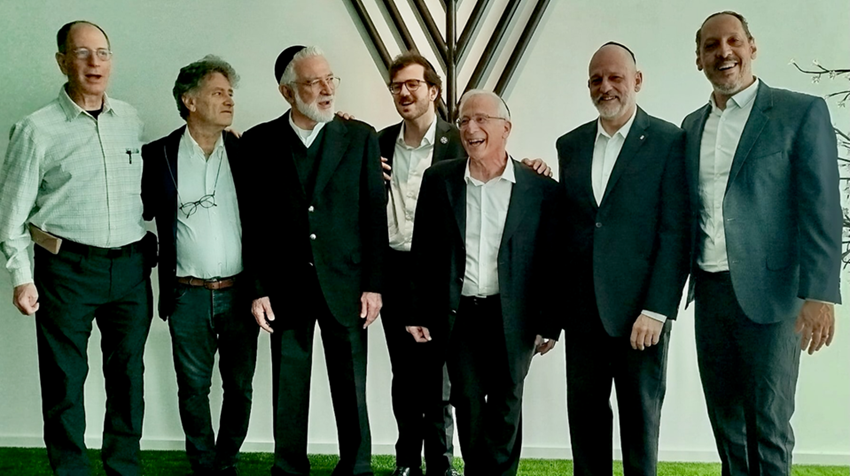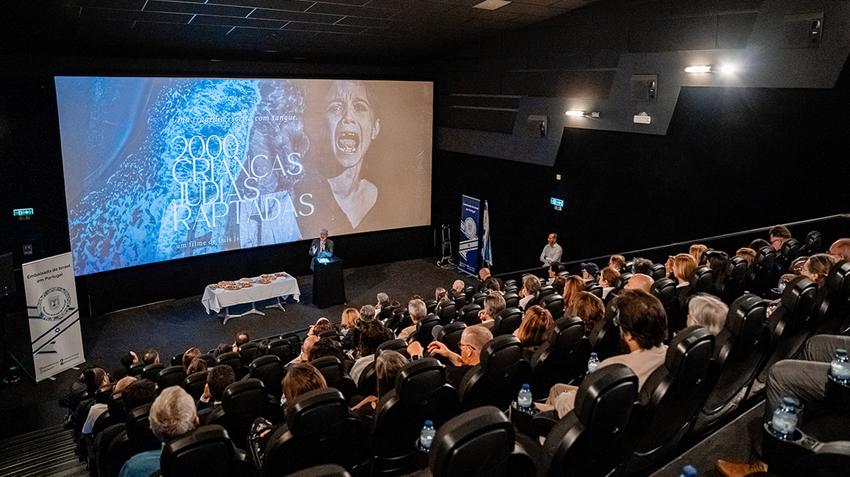It is one of the ten most splendid monuments in Oporto. A religious temple that honors a religious community that already existed in the city long before the foundation of Portugal. Citizens who don't know it imagine what its interior is like. They are not able to guess. That building on Rua de Guerra Junqueiro has two prayer rooms with a total capacity of six hundred people, each with spaces for men and women. There is a library with three rooms, a modern mikveh, store, industrial kitchens, restaurant and rooms to serve meals to hundreds of people, in addition to the two sukkot.
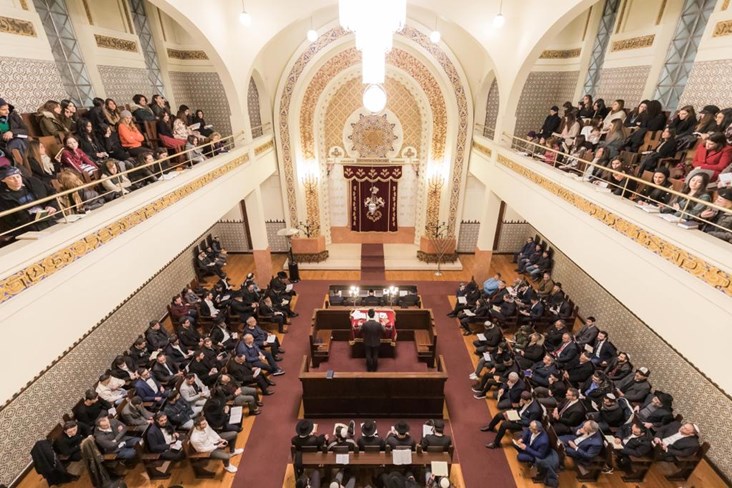
For decades, it was the headquarters of the Jewish Community of Oporto, which today is located elsewhere. The Kadoorie Mekor Haim Synagogue is a community center that brings together a thousand Jews from the city and surroundings, from thirty nations. Open every day of the year, with a constant buzz of community members coming in and out to use its facilities, the Synagogue has two rabbis, one Sephardic and the other Ashkenazi (a third rabbi leads another community Synagogue, for foreign students), shamash, balanit, librarian, security guards and the administrative staff needed to ensure the operation of all the services of that magnificent monument due to its majesty, grandeur, color and beauty.
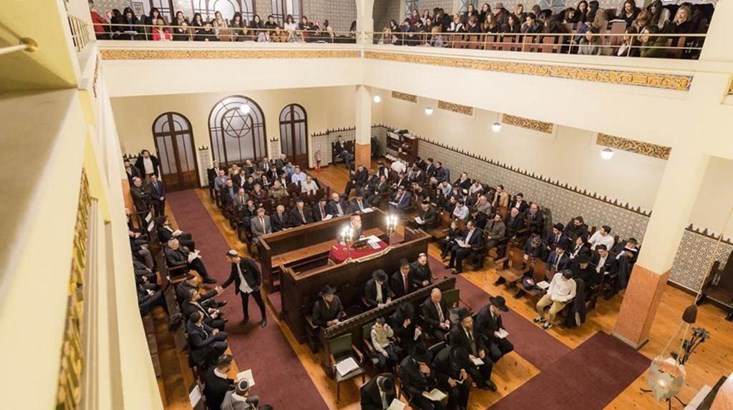
As in all functioning Synagogues in the world, Shabbatot throughout the year are special dates at Kadoorie Mekor Haim Synagogue. For nearly a decade, the dazzling building has hosted a minyan permanently, in spring, summer, autumn and winter, with wind, rain, sun, heat and cold, with more or less people, with more or less enthusiasm. Always. Even when storms hit the Synagogue with lightning and thunder, and the interior of the temple is freezing, as is usual in huge buildings nearly a century old, there are always enough people for the Shabbat service to take place with joy and fidelity. This constant and dedicated minyan sometimes draws well over a hundred people, or even six hundred on Kippur and Shavuot.
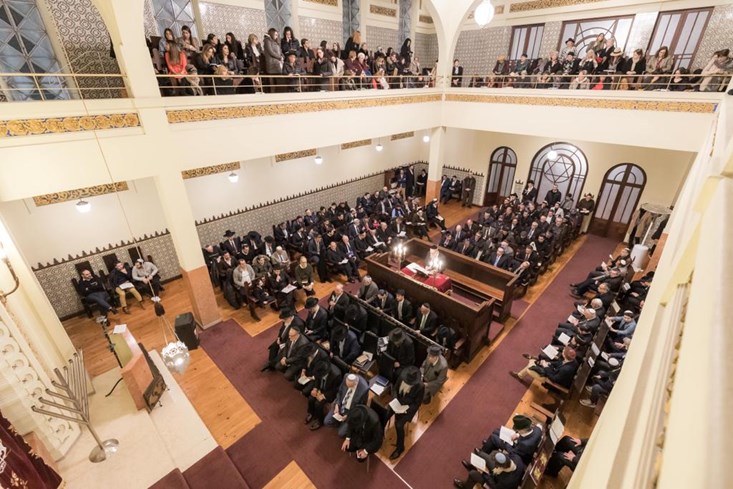
In fact, the main dates of the Hebrew calendar are celebrated in the Synagogue with great devotion. So it is with Pesach, Lag BaOmer, Yom Haatzmaut, Shavuot, Tisha B'Av, Rosh Hashanah, Yom Kippur, Sukkot, Chanukah, Tu B'Shevat and Purim. In 2021, a Jewish lady who has traveled to over fifty countries and who was in Oporto to celebrate Kippur wrote to the Community: “I wrote to several friends and family members afterwards to tell them about how deeply moved I was emotionally. I don't think I've ever heard such passionate praying and singing before in a Synagogue. It wasn't just the power of the voices praying in unison that moved me so deeply, it was also the symbolism of so many Jews gathering together in a Synagogue in a country that was heavily impacted by the Inquisition."
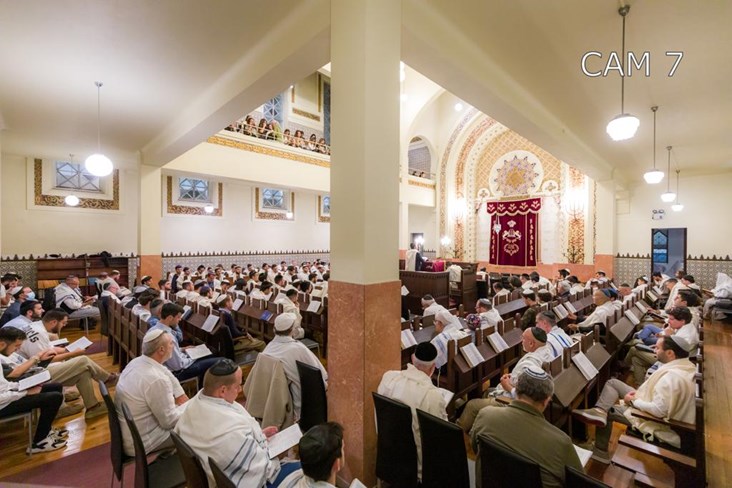
Significant religious life at the Kadoorie Mekor Haim Synagogue is relatively recent. The history of the Synagogue (inaugurated in 1938) and the modern history of the community itself (which began after the official abolition of the Inquisition in 1821 and officially restarted in 1923, with the founding of an association called "Comunidade Israelita do Porto", today "Jewish Community of Oporto) was filled with much emptiness, cold and sadness. Although for ninety years there have always been enough Jews in the city to compose the minyan and celebrate the weekly prayers, there has never been a year in a row when this has happened. For decades, the word that Jewish tourists bestowed on the Synagogue was just one: silence.
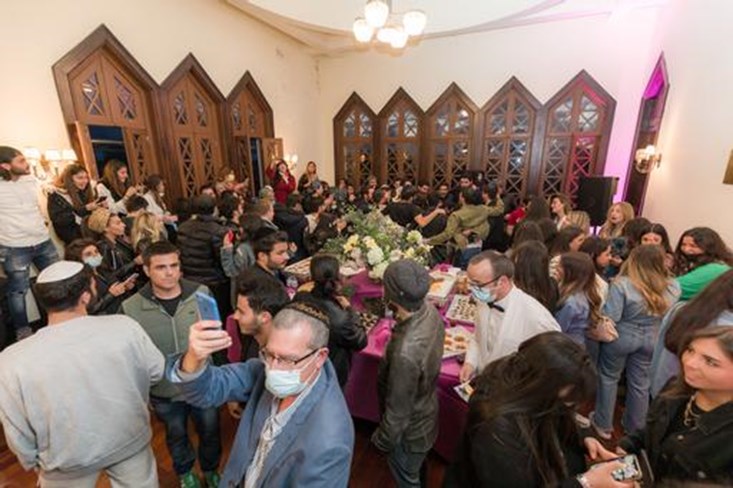
Currently, tourist visits are not allowed, instead they are directed to the Jewish and Holocaust Museums. The Synagogue is a community religious temple, not a museum space or a Clérigos Tower. There are many monuments to visit in the city of Oporto, not least of which are the important museums of the Jewish Community. In modern Europe it is common to see countless dead communities whose Synagogues are almost abandoned, functioning as museums, some even as restaurants and bars.
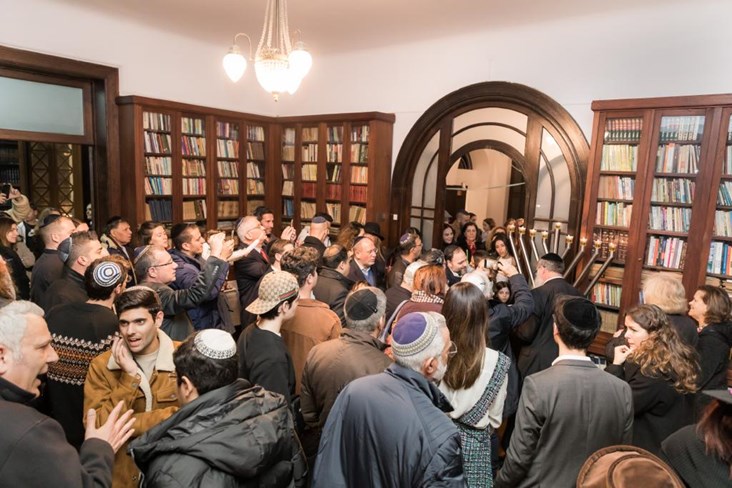
In addition to being a temple intended to serve a religious community, the Synagogue has an educational role for non-Jewish young people from Portuguese schools, who can visit the temple by appointment, in an integrated plan with the Jewish Museum and the Holocaust Museum of Oporto. The three buildings together receive more than 50,000 teenagers a year.
3. Shoah Museum
This is an educational project that has no parallel in Europe. Much more than cold spaces where young people listen to discourses of convenience associated with dominant policies, the Synagogue and museums of the Jewish community in Oporto talk about Jews, their history, culture, religion, persecution, suffering, conquests, defeats. Teenagers are also taught the seven rules of human morality – the Sheva Mitzvot – that constitute Judaism for non-Jews.
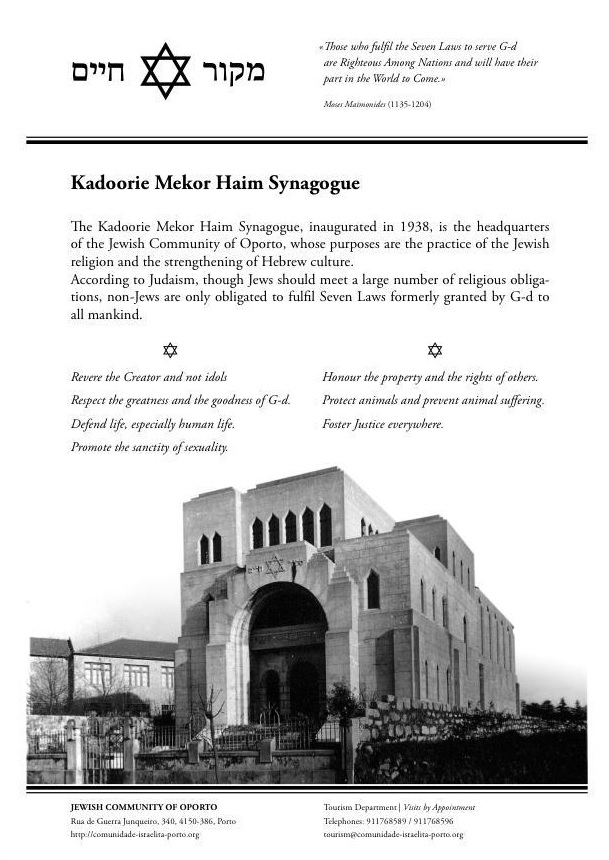
The history of the Synagogue
To understand the history of the Synagogue is to understand the entire history of Jews in Portugal in general and in Oporto in particular. The Jews have been present in Oporto for at least two millennia, preceding any memories or existing monuments in this city. Following the foundation of Portugal in 1143, the Jewish community of Oporto became very scholarly, and was strong in economic terms.
However, King D. Manuel forbids Judaism in Portugal. Two hundred thousand Jews fall victim to this edict. They must confront a long journey to distant countries. Others find it difficult to leave Portugal and are compelled to forget the Law of Moses. Officially, the Jewish community disappears. It would only re-emerge 300 years later…
It is not until the end of the Inquisition in the nineteenth century that the Jews slowly begin to return to Portugal. Initially, the community was Sephardic, from North Africa, but at the end of the 19th century, all the families were Ashkenazi, which multiplied before, during and after the First World War. Indeed, a small community of Ashkenazi Jews connected by marriages among themselves settles in Oporto, and these are joined by a Portuguese military officer (Captain Barros Basto) converted to Judaism, who soon begins to travel, sometimes on horseback, seeking to bring back to official Judaism those who practice "Marranism".
The Jewish world is divided in this regard. Many declare that the Marranos are not Jews for they cannot prove their Jewish descent in the matrilineal line, nor do they believe that such Marranos can convert to Judaism according to Jewish law, given that “Marranism” is a religion in itself, practiced in an environment of poor culture, with irreversible signs of Christianity.
Despite the contrary voices, Barros Basto believes in the project and is soon busy travelling from place to place, by train, on foot, sometimes on horseback, going to the rescue of the Marranos. To carry out this human rescue programme, unequalled in the history of mankind, the Jewish community of Oporto sets up a school and wishes to build the largest Synagogue of the Iberian Peninsula, with the financial support of international Jewish organisations. A family of Portuguese philanthropists – Kadoorie Mocatta – paid the last 5000 pounds needed for the completion of work on the Synagogue. The idea behind building a great Synagogue was to ensure that the Marranos did not feel inferior with regard to the Catholics. In terms of beauty and grandeur the new Synagogue would rival the most majestic of churches.
The “Rescue Work” failed, for contrary to everyone’s expectations the Marranos were not receptive to the idea. Complex and hermetic, official Judaism which is practised in the Hebrew language, rejected many of the Marranos’ practices that had been influenced by Christianity. However much they liked Captain Barros Basto, they mistrusted a foreign-led rescue programme and were not willing to add anything to what they already did or to correct their practices which had been influenced by Christianity.
Victimized by anonymous letters from three immoral Marranos, the Captain was expelled from the army for having taken part in circumcisions, a case that became known as the “Portuguese Dreyfus" case. When the great Kadoorie Mekor Haim Synagogue was inaugurated in 1938, the “Rescue Work” was practically dead. It was the start of a progressive process of assimilation which led to the extinction of the Marrano communities in the villages owing to mixed marriages, emigration, liberalisation of customs and the weakening of religious ties.
The period of Nazism and the Holocaust brought hundreds of refugees to Oporto, their life in ruins. The Jewish community in this city became practically a community of refugees. Old and young, sad, distraught, with no worldly goods, they cried for their families whose fate they did not know. Many slept and wept here and there in the Synagogue. All the moving stories were similar. With the exception of a few, who state their wish to settle in Portugal, most were only waiting for the moment to depart to other countries where they could start their lives again. “Europe – they said – never again!”
Following the departure of the refugees the insignificance of the Jewish community of Oporto in terms of number is quite obvious, as is the exaggerated dimension of its Synagogue. One of the smallest communities of Europe has one of the largest Synagogues. The absence of the faithful during prayers in the temple means that the Community’s religious leader at the time, Srul Finkelstein, prays and sings, many times totally alone, in the vastness of the echoing Synagogue. A very religious man, for whom everything in life has deep meaning, Finkelstein often asks himself why God allowed the construction of such a large and imposing Synagogue in the city of Oporto, where the number of Jews is so small.
In those desolate decades, Oporto bore witness to the traumatic life of Emil Oppenheim, a German refugee, former lawyer and political activist in Germany, who lived out his life working in a modest laundry close to the Synagogue. When he died, in 1982, no Jew from Oporto went to the cemetery and the Kaddish (Jewish prayer for the dead) was not recited, although it had been his ardent desire, for the Jewish community in this city was down to its lowest number and nobody heard of his death. One day, a nun who was a nurse in the Catholic Church and had treated Oppenheim in the last years of his life, visited his tomb and alone she recited the Kaddish: "Yitgadal v’yitkadash sh’mei raba..."!
It was in the year 2018 when a strong, renewed Jewish Community of Oporto held a special Shabbaton to recite the Kaddish in memory of Emil Oppenheim. Many of those present were Sephardic Jews of Portuguese origin, who had recently arrived in Portugal for, five centuries after D. Manuel’s edict had led to the mass exile of the Jewish community, a new law promoted the return to this land they had been forced to forsake. And in Oporto, in the great Synagogue, the Jews again sang in praise of Adonai.
